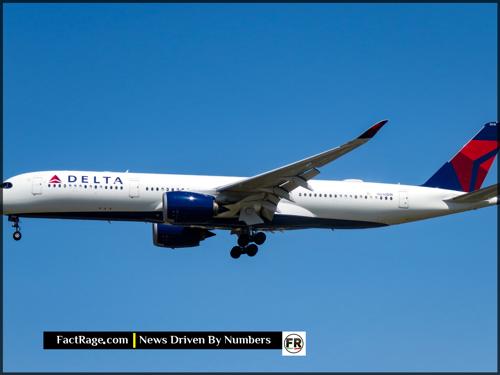ATLANTA, GA – Delta Air Lines has reported record-breaking quarterly revenue, but faces significant financial headwinds from volatile fuel prices and increased labor expenses that challenge its outlook.
- Record Revenue – For the second quarter of 2025, Delta announced record revenues of $15.5 billion, a 1% increase over the prior year, driven by strong passenger demand.
- Persistent Headwinds – Rising operating costs, primarily from fuel price volatility and a costly new pilot contract ratified in 2023, are putting pressure on profit margins.
- Forward Guidance – The airline has issued guidance for 2025 earnings per share between $5.25 and $6.25 and projects generating $3 to $4 billion in free cash flow.
The impressive top-line number signals a robust demand for travel. However, a deeper analysis of the carrier’s balance sheet reveals a classic conflict between strong sales and the rising costs required to generate them.
Reading Between the Balance Sheet Lines
![]() An earnings report is more than a simple scorecard of wins and losses. It’s a detailed map of a company’s strategic priorities, its operational challenges, and its financial resilience. The headline revenue figure only tells part of the story; the real insights are found in the margins, operating costs, and forward-looking guidance.
An earnings report is more than a simple scorecard of wins and losses. It’s a detailed map of a company’s strategic priorities, its operational challenges, and its financial resilience. The headline revenue figure only tells part of the story; the real insights are found in the margins, operating costs, and forward-looking guidance.
Read On…
This analysis breaks down the key data points from Delta’s latest report to understand the true financial health of the airline and what it signals for the industry at large.
What’s Driving Delta’s Record-Breaking Revenue?

Key Efficiency Metric
Passenger load factor, the percentage of seats filled, is a critical indicator of an airline’s efficiency and profitability.
The primary driver behind Delta Air Lines’ $15.5 billion second-quarter revenue is sustained, high-volume passenger demand, particularly in its premium and international segments. This figure, representing a 1% year-over-year increase, indicates that consumers are continuing to prioritize travel. The airline’s ability to fill its planes, measured by the passenger load factor, has remained strong. This top-line growth is a positive signal for investors and the industry, suggesting that the post-pandemic travel boom has transitioned into a more stable, high-demand environment. The question for the market is whether this revenue strength is sufficient to absorb rising costs.
How Are Fuel and Labor Costs Pressuring Profits?
Competitive Landscape
The airline industry is defined by intense competition on pricing and routes, making cost control a crucial element of corporate strategy.
Despite strong sales, Delta’s profitability is being squeezed by two major operational expenses. First, the airline industry remains highly exposed to fluctuations in crude oil prices, and fuel consistently ranks as a top expenditure. Any significant spike in oil prices directly impacts the bottom line. Second, labor costs have seen a substantial increase. The contract ratified in 2023 with the Air Line Pilots Association (ALPA) included significant pay raises and benefit improvements for its pilots. While essential for labor stability, these new terms represent a permanent and substantial increase in fixed costs, compelling the airline to maintain high operational efficiency to protect its margins.
What Is Delta’s Financial Outlook for the Rest of the Year?
Looking ahead, Delta’s management has projected confidence by issuing full-year 2025 guidance for earnings per share (EPS) in the range of $5.25 to $6.25. The company also forecasts generating between $3 and $4 billion in free cash flow, a key metric indicating a company’s ability to invest in its business, pay down debt, or return capital to shareholders. This forecast hinges on the airline’s ability to manage its costs effectively and on the continuation of strong travel demand. Achieving these targets in a highly competitive industry, while navigating the unpredictability of fuel markets, will be the central challenge for the airline’s leadership.
null
![]() null
null














